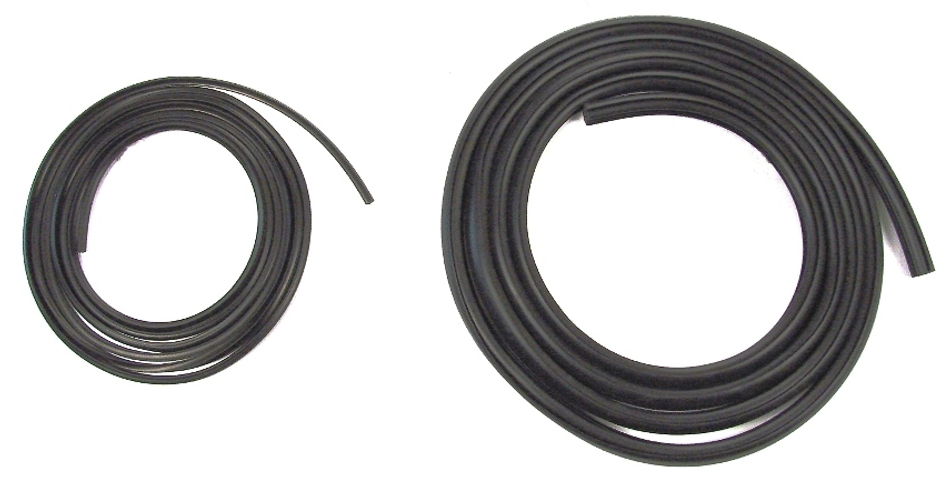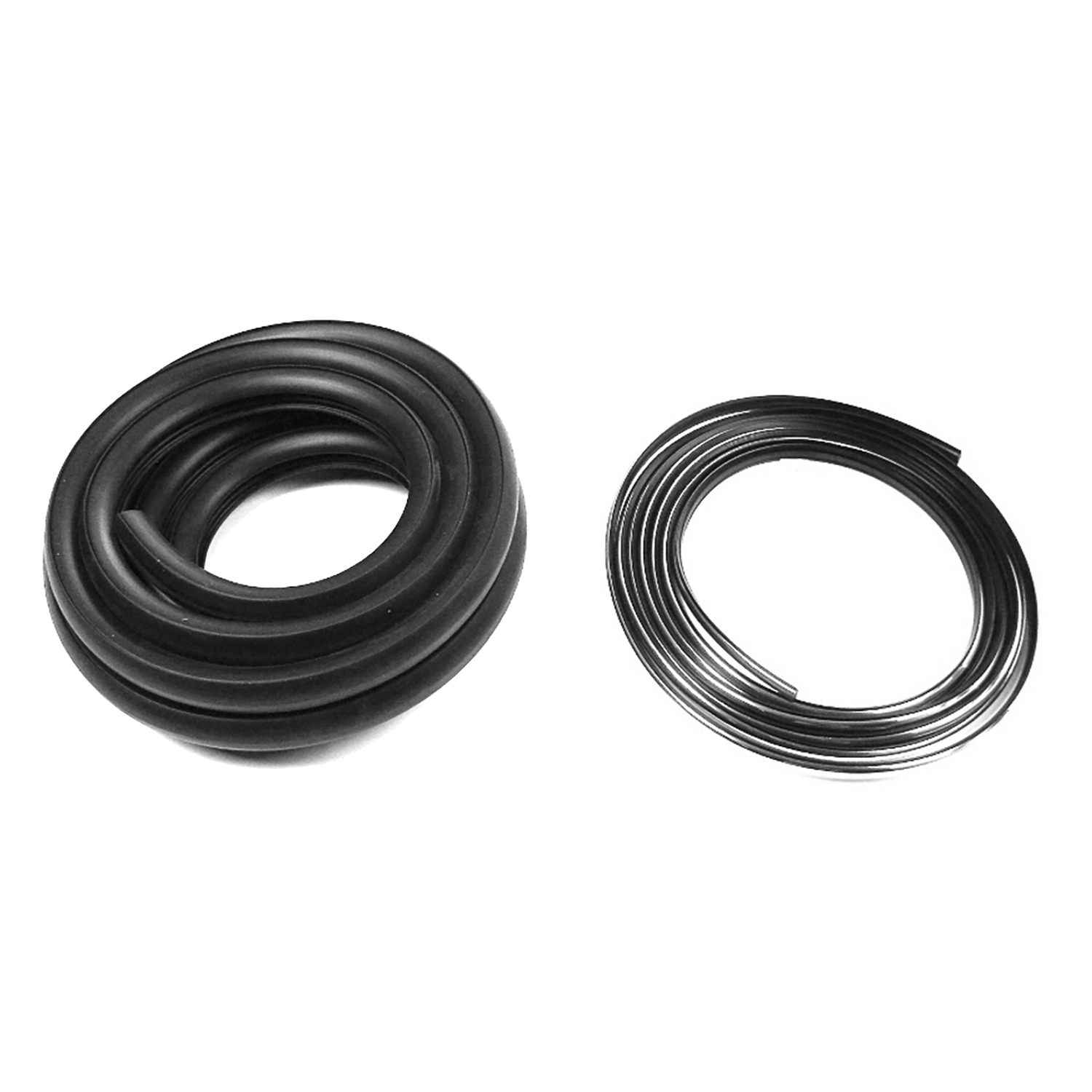Image of 1957 Gmc Series 253, Note: These illustrations use artistic license and may differ from actual historical models.
Performance Metrics
Fundamental Metrics
Emotional Appeal
MMP Rating
| Engine Specifications | |
|---|---|
| Engine: | 5.7L V8 |
| Displacement: | 350 cubic inches |
| Horsepower: | Estimated 180-200 HP |
| Torque: | 300 lb-ft |
| Compression Ratio: | Estimated 8.5:1 |
| Ignition System: | Conventional points ignition system |
| Cooling System: | Liquid-cooled |
| Performance Specifications | |
| 0-60 Time: | Information not available |
| 1/4 Mile Time: | Information not available |
| Top Speed: | Estimated 85 mph |
| Transmission and Drive | |
| Drive Type: | Rear-wheel drive |
| Transmission Type: | 4-speed manual |
| Fuel and Efficiency | |
| Fuel System Type: | Carburetor |
| MPG: | Estimated 10-12 MPG |
| Dimensions and Brakes | |
| Brakes: | Drum brakes |
| Wheelbase: | 114 inches |
| Weight: | Estimated 3,500 lbs |
Note: Specifications for classic cars are given to the best of our ability, considering the limited and variant data available.
The Quintessential Workhorse: The 1957 GMC Series 253
The year 1957 brought forth a vehicle that would become a symbol of American industriousness and ingenuity: the GMC Series 253. Born from the assembly lines of General Motors, this truck was designed to meet the demands of post-war America, a time when robustness in a vehicle was not just desired but required. The Series 253 was more than just a means of transportation; it was a testament to the era's work ethic and a pivotal player in the transformation of the automotive industry.
Design and Innovation
With its commanding presence, the 1957 GMC Series 253 showcased an exterior that was both functional and stylish. Its bold chrome grille, rounded fenders, and imposing stature were a reflection of the design ethos of the time. The interior was no less impressive, featuring durable materials that could withstand the rigors of heavy use. While creature comforts were minimal, the emphasis was on practicality and longevity. Technologically, the Series 253 was ahead of its time, offering features such as an optional V8 engine, which was a rarity in trucks during that period. The color palette ranged from classic commercial hues to more vibrant options, with popular choices including shades like Omaha Orange and Swift Red. The most iconic body style was undoubtedly the long bed step-side, which provided both utility and aesthetic appeal.
Historical Significance
The Series 253's impact on automotive design cannot be overstated. It set a new standard for truck durability and performance, influencing future generations of utility vehicles. Its design language echoed throughout GM's lineup for years to come, cementing its place in automotive history.
Performance and Handling
Performance-wise, the 1957 GMC Series 253 was built to handle the toughest jobs. While top speed and acceleration were not its primary focus, it boasted enough power to haul significant loads with ease. The ride was firm yet manageable, with a suspension designed to absorb the shocks of uneven terrain. Behind the wheel, drivers could expect a visceral experience—the rumble of the engine and the direct feedback from the road created a sense of connection with the machine.
Ownership Experience
Owners of the GMC Series 253 typically used it for work-related tasks, though some found joy in restoring and showing these trucks at classic car events. Maintenance was straightforward, as GM designed these vehicles with serviceability in mind. Reliability was one of its strong suits, making it a favorite among those who needed a dependable work vehicle.
Fun Facts
The Series 253 has its share of interesting trivia. For instance, some models were equipped with a rare NAPCO four-wheel-drive system, making them highly sought after by collectors. Although not known for breaking speed records, these trucks were celebrated for their endurance and reliability. Criticisms were few but typically centered around the lack of modern comforts—a trade-off for its utilitarian design.
Collector's Information
Today, the value of a 1957 GMC Series 253 can vary widely depending on condition, originality, and specific configuration. While production numbers are not well-documented, it's estimated that thousands were produced, with only a fraction surviving to this day. As for value trends, well-preserved examples have seen appreciation over time due to their historical significance and popularity among collectors. Prices can range from $10,000 for a project vehicle to upwards of $50,000 or more for a fully restored example.
Conclusion
The 1957 GMC Series 253 stands as a monument to an era when vehicles were built to last and serve faithfully. Its legacy endures in the hearts of collectors and enthusiasts alike, who appreciate not only its rugged charm but also its contribution to automotive history. As we look back on this classic workhorse, we are reminded of the timeless values of durability and practicality—a true American classic.
1957 Gmc Series 253 Catalog of Parts
 1957 GMC Series 253 Rear Window Seal '42-'66 GM Full Size Trucks With Small Window-VWS 7313-URear Window Seal '42-'66 GM Full Size Trucks With Small Window, Includes Lockstrip, Set of 2.
1957 GMC Series 253 Rear Window Seal '42-'66 GM Full Size Trucks With Small Window-VWS 7313-URear Window Seal '42-'66 GM Full Size Trucks With Small Window, Includes Lockstrip, Set of 2. 1957 GMC Series 253 Rear Window Seal '55-'66 GM Full Size Truck w/ black lockstrip-VWS 7313-VRear Window Seal '55-'66 GM Full Size Truck, Second Series With Large Window. Includes Lockstrip, Set of 2.
1957 GMC Series 253 Rear Window Seal '55-'66 GM Full Size Truck w/ black lockstrip-VWS 7313-VRear Window Seal '55-'66 GM Full Size Truck, Second Series With Large Window. Includes Lockstrip, Set of 2. 1957 GMC Series 253 Rear Window Seal, 55-66 GM Full Size Truck w/ Chrome Lockstrip-VWS 7313-WRear Window Seal, 55-66 GM Full Size Truck, Second Series With Large Window. Chrome Lockstrip Included, Set Of 2.
1957 GMC Series 253 Rear Window Seal, 55-66 GM Full Size Truck w/ Chrome Lockstrip-VWS 7313-WRear Window Seal, 55-66 GM Full Size Truck, Second Series With Large Window. Chrome Lockstrip Included, Set Of 2.Why Choose Metro?
For over 100 years, Metro Moulded Parts has been the pinnacle of quality in classic car restoration parts. Our commitment to precision and authenticity in every component ensures a perfect fit and an OEM-level appearance.
- Expert Craftsmanship & Quality: Each part is a testament to our dedication to reliability and perfection, crafted from original designs and thoroughly tested.
- Advanced Technology: We use cutting-edge techniques to create flawless, long-lasting parts that surpass others in performance.
- SuperSoft Sponge – The Ultimate Door Seal: Not only are our door seals 30% softer than competitors', but they're also guaranteed to never leak. They effectively reduce wind and road noise, enhancing your classic car's comfort and driving experience.
- Proudly American: Our parts are a product of American craftsmanship, made in the USA with a spirit of excellence and heritage.
- Unrivaled Warranty: We back our products with a 30-year industry-leading warranty, a testament to our confidence in their quality.
Join us in preserving the legacy of classic cars with parts that are crafted for perfection, not just made.

